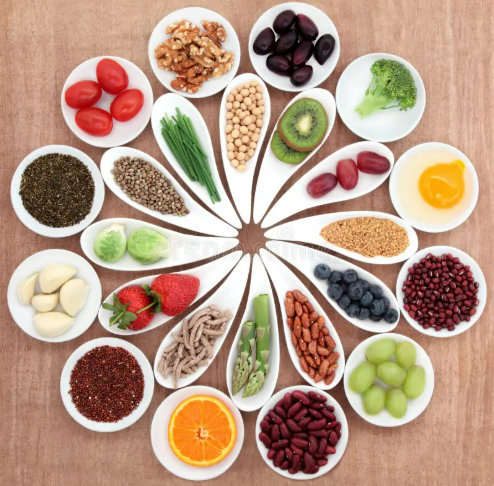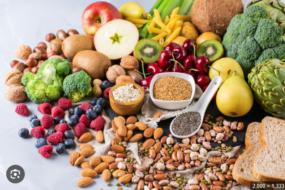
Introduction to Food Labels
Food labels are everywhere. They’re on the cereal boxes in your pantry, the snack bags you grab on-the-go, and even the fresh produce at your local market. But how often do we truly take a moment to understand what those labels are telling us? With so many options available, making informed choices can feel overwhelming.
Yet, decoding food labels is essential for maintaining a healthy lifestyle. The information they provide can guide our decisions and help us navigate through an ocean of marketing gimmicks and misleading claims. In this blog post, we’ll dive into the world of food labels—unpacking nutritional facts, ingredient lists, and more—to empower you to make smarter eating choices that align with your health goals. Let’s embark on this journey together!
Have you ever stood in the grocery aisle, staring at a food label and wondering what it all means? You’re not alone. With so many products claiming to be “healthy,” “natural,” or “organic,” navigating food labels can feel overwhelming. But understanding these labels is crucial for making informed choices about what goes into your body.
Food labels provide essential information about nutritional content, ingredients, and even sourcing practices. They are designed to help you make decisions that align with your health goals. Whether you’re aiming for weight loss, better nutrition, or simply want to eat more mindfully, knowing how to read these labels can empower you.
Let’s dive deep into the world of food labeling and uncover how they can guide you toward healthier eating habits. By breaking down key components of these labels, you’ll soon be equipped with the knowledge needed to shop smartly and confidently!
The Importance of Reading Food Labels
Reading food labels is crucial for making informed dietary choices. These labels provide a wealth of information that can directly impact your health and well-being.
Understanding what’s in your food helps you identify nutrients essential for your body. It also enables you to avoid harmful additives or allergens.
Many people overlook serving sizes, which can skew their perception of calories and nutrients consumed. A quick glance might give an impression of healthy eating, but digging deeper reveals the truth.
Nutrition facts empower consumers to choose foods aligned with their personal goals—be it weight loss, muscle gain, or simply maintaining a balanced diet. Knowledge is power when navigating the grocery aisles full of options.
By taking the time to scrutinize these labels, you’re not just shopping; you’re investing in your health journey. Every label tells a story about what’s on your plate and how it affects you.
Decoding Nutritional Facts and Ingredients Lists
Nutritional facts panels can feel overwhelming at first glance. However, they provide essential insights into what you’re eating. Understanding these numbers is key to making healthier choices.
Start with serving size. This tells you how much of the product constitutes one serving, which helps in managing portion control. Pay attention to calories; knowing how many you’re consuming aids in maintaining or reaching your desired weight.
Next, look at macronutrients: fats, carbohydrates, and proteins. Healthy fats are beneficial for heart health while balancing carbs and protein supports energy levels throughout the day.
Ingredients lists reveal what’s truly inside your food. Ingredients are listed by quantity—meaning the first few items make up most of the product. Watch out for hidden sugars or preservatives lurking further down that list.
Familiarizing yourself with common additives can help you avoid unwanted ingredients and make informed decisions about what’s on your plate.
Misleading Claims and Marketing Tactics
Food packaging often dazzles with catchy phrases and bold claims. It’s easy to get drawn in by labels boasting “all-natural” or “fat-free.” However, these terms can be misleading.
For instance, “natural” isn’t strictly regulated and may not mean what you think. A product labeled as such could still contain preservatives or artificial ingredients.
“Low-fat” options might substitute fat with sugar to enhance flavor, leading to other health concerns. It’s crucial to read beyond the front of the package.
Watch out for portion sizes too; they can skew perceptions of calorie counts. Just because something is low-calorie doesn’t mean it’s healthy when eaten in larger quantities.
Marketing tactics are designed to catch your eye and play on emotions. Savvy consumers must dig deeper for a clearer understanding of what they’re really consuming.
Tips for Navigating Food Labels Effectively
Navigating food labels can feel overwhelming. Start by familiarizing yourself with the layout. The serving size is crucial; it sets the context for all nutritional information.
Next, focus on calories and key nutrients like fats, sugars, and proteins. Look for daily value percentages to understand how a product fits into your overall diet.
Ingredients lists are equally important. They’re listed in order of quantity. If sugar or unhealthy fats occupy the top spots, consider choosing another option.
Be cautious of health claims such as “low-fat” or “natural.” These terms may not always reflect true nutritional quality.
Take your time when shopping. Compare different products side by side to find healthier choices that suit your lifestyle. Awareness leads to better decisions at every meal.
Conclusion: Empowering Consumers for a Healthier Lifestyle
Understanding food labels is crucial for anyone looking to make healthier choices. By becoming familiar with what the labels really mean, consumers can navigate the grocery aisles with confidence and insight.
Reading nutritional facts allows you to compare products, ensuring that you’re not only aware of what you’re consuming but also making informed decisions based on your dietary needs. Ingredients lists reveal much about a product’s quality, helping you avoid unwanted additives or allergens.
However, it’s essential to remain vigilant against misleading claims often used in marketing tactics. Companies may embellish benefits or use buzzwords that sound healthy but don’t always tell the full story. By honing your ability to spot these tactics, you can better protect yourself from being misled.
Navigating food labels effectively involves taking time to read and understand them rather than rushing through a shopping trip. Developing this habit empowers you as a consumer, allowing you to prioritize nutrition without feeling overwhelmed by choices.
Knowledge truly is power when it comes to your health journey. The more informed you are about what goes into your body, the better equipped you’ll be to make decisions that contribute positively to your overall well-being and lifestyle choices. Remember—every small step towards understanding food labels helps pave the way for healthier eating habits down the line.






















